Roy Kuhlman, Graphic Designer (1923–2007)
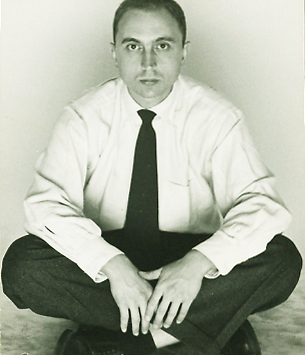
Roy Kuhlman was an American graphic designer, artist and photographer. He is best known for the mid-century modernist book covers he designed for Grove Press, the iconic publisher of controversial and avant-garde literature by authors such as D.H. Lawrence, Samuel Beckett, Bertolt Brecht, Henry Miller, Jack Kerouac and William Burroughs.
Kuhlman was one of the first to apply Abstract Expressionist concepts to graphic design. Grove’s owner Barney Rosset described his designs as an attempt to “go between being a purely creative act and a commercial one.”1 Fred Jordan, Grove’s editor-in-chief from the late 50s through the 1960s, agreed: “He didn’t design a book cover. He did an abstract work of art.”2
Kuhlman’s designs for Grove were primitive, expressive, playful and enigmatic, providing a visual representation of the counterculture and revolutionary texts. His creative use of typography, high-contrast photographs, and almost childlike illustrations, combined with an unconventional use of color and space, are the hallmarks of his style.
To solve design challenges presented by small budgets, he would often use only two or three colors, which he layered to create additional hues. He experimented with hand-drawn type, moiré patterns, photograms and blurred images. He used simple cutout geometric shapes and public domain images overlaid with patterns or swatches of color.
“Mr. Kuhlman’s minimalist graphic vocabulary was entirely his own. He avoided literal representation, because he said he could not really draw well. Instead, his random color patterns and amorphous shapes seemed totally independent from the texts they were illustrating.”
—Steven Heller, “Roy Kuhlman Dies at 83; Designer for Grove Press.” The New York Times (February 5, 2007).
His work was at times conceptual—for example, he occasionally used symbolism in his book covers to portray concepts expressed in the book. However, he rarely read the manuscripts before designing the covers. Art director and design expert Steven Heller wrote: “He avoided literal representation. … Instead, his random color patterns and amorphous shapes seemed totally independent from the texts they were illustrating.”3
Nevertheless, his designs were the perfect counterpoint to Grove’s texts. As primary designer, his unique style became the publisher’s visual brand identity. According to Loren Glass, author of Counterculture Colophon: Grove Press, the Evergreen Review, and the Incorporation of the Avant-Garde, Kuhlman’s work “hovers at the threshold between abstraction and figural reference, allowing him to gesture toward cultural specificity without sacrificing his signature style.”4
Kuhlman’s designs for Grove influenced generations of designers and transformed paperback book cover design. Heller states that Kuhlman’s work “achieved a vibrancy that was not common at that period.”5
Originally trained as a fine artist, Kuhlman was primarily motivated by the experience of creating art and the appreciation of beauty and form. This generally superseded any dictates made by the client. As a result, he developed a reputation for being uncompromising and even difficult to work with. However, his work relationship with Rosset lasted two decades, no doubt largely due to Rosset’s respect for freedom of expression and his tolerance of eccentricity.
Kuhlman sought inspiration from many sources, and throughout his career he paid homage to most of the modern styles and movements, including the Surrealists, the Abstract Expressionists, Russian Constructivism and the Pop Art movement. He was most inspired by the simple cutouts of Matisse, the pointillism of the Impressionists, the collage art of the Dadaists, the geometric abstraction of post-war minimalism, the photograms of Man Ray and Laszlo Moholy Nagy, as well as the typography of the Victorian era.
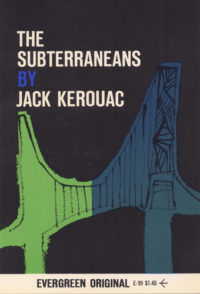
He paid tribute the work of many great twentieth-century artists and designers, including Paul Rand, Alvin Lustig, Franz Kline, Robert Motherwell, Adolph Gottlieb, Piet Mondrian, Victor Vasarely, Josef Albers, Frank Stella, Andy Warhol and many others. And in all these emulations, he masterfully transmuted their styles into his own unique expression.
During his long career as a graphic designer, Kuhlman created close to 2000 book covers. In addition, he designed magazines, album covers, catalogs, advertisements, logos and brochures. His clients included U.S. Plywood, Mobil, AT&T, CIBA, Hertz, IBM, and many others. He was an accomplished photographer, and often used his own photographs in his designs. He created cartoons for Esquire and the Journal of the American Medical Association. And he worked with Electra Films as an animation designer and live-action director for motion graphics and title sequences.
Kuhlman has received numerous awards, and his work has appeared in design annuals issued by the Type Directors Club of New York, the Art Directors Club of New York, the American Institute of Graphic Arts and others. In 1995, he was inducted into the Art Directors Club Hall of Fame for his work in graphic design and advertising.
Early Years
Kuhlman was born in Fort Worth, Texas, and several years later his family relocated to Glendale, California, in hopes of better opportunities. His father, Royal, was an auto mechanic from Chicago, and his Texas-born mother, Lillian, was a nurse with many artistic talents herself. The move proved to be the right decision for many reasons, and they lived comfortably enough through the Depression.
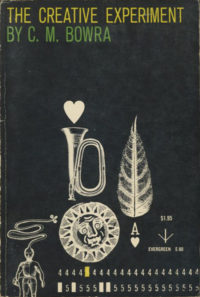
Kuhlman was born with a hole between the two sides of his heart, which significantly decreased the supply of oxygen in his blood—a condition known as Blue Baby Syndrome because children with this defect have a blue complexion.
Due to this condition, Kuhlman was unable to exercise or play with the other boys. But his artistic talents emerged when he was very young, and he soon began drawing cartoons and illustrations during the long hours of convalescence. In High School, while most of his friends were conscripted to fight in World War II, he was not eligible for the draft. This inadequacy further fueled his determination to succeed as an artist.
While attending Glendale High School, his mother used her considerable gifts of persuasion to enroll her son in an adult drawing class with nude models. And for three years, he studied with the renowned Western painter Ernest Tonk (1889-1968), who worked for MGM and Universal Pictures painting action scenes. Kuhlman also wrote poetry, and studied the cello and recorder. His talent was obvious, and it was clear he could excel in whatever he chose to do.
At the time, Blue Babies had a life expectancy of 23 years. Fortunately, in his last year of High School, Lillian learned about the newly developed open-heart surgery that could fix her son’s heart. The experimental procedure was being performed in a nearby hospital where she worked. However, the surgeons were reluctant to accept him as a patient. They believed he was too old and therefore was unlikely to survive the surgery. In order to convince the surgeons to proceed with the operation she agreed to bring her son to the California countryside for one year, so he could rest and regain his strength.
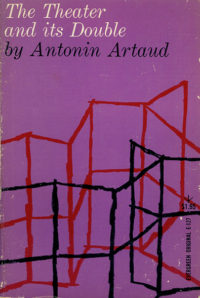
Kuhlman had the surgery when he was in his early 20s. According to Kuhlman’s older sister Mildred, he was the 33rd person to receive the new surgery, and 30 of the previous patients had died from infection. The conditions were less than ideal: The operation took place in a hallway because all the operating rooms were filled. People walking by were allowed to observe and take pictures. As a result, Kuhlman also succumbed to infection, and he had to undergo another operation.
After the second surgery, however, Kuhlman’s recovery was speedy, and his strength was quickly restored. He channeled this new energy into his studies. He received four scholarships to the Chouinard Art Institute in Los Angeles, where he studied for 2.5 years. Based on his work at Chouinard, Kuhlman obtained a scholarship to attend the Art Students League of New York, and in 1946, he left California for good. He also attended the Skowhegan School of Painting and Sculpture in Maine, where he studied sculpture.
From Realism to Abstraction
Kuhlman quickly made the switch to graphic design when he entered the work force. That decision was not only a result of his realization that he was unlikely to earn a living if he continued to pursue his childhood dream of becoming the next Rembrandt, but it also marked a turning point in his style—he left Realism behind and reinvented himself as an abstract graphic artist.
Kuhlman arrived in New York City in the mid-1940s, when the Abstract Expressionist movement was blossoming in Greenwich Village. The newly emerging movement emphasized the depiction of emotions rather than objects. Accidents that occurred during the painting process were used to the artist’s advantage. This appealed to Kuhlman who believed he could not draw.
For many Abstract Expressionists, the physical act of painting—as a pure expression of emotion and a spontaneous release of unconscious creativity—is considered as important as the finished product. This revolutionary attitude was a departure from traditional painting, and it allowed for the expression of everything from personal feelings to universal, spiritual concerns.
Personal Gestalt

It was a time when the psychoanalytic theories of Sigmund Freud, Carl Jung and others were becoming more accessible throughout the general public. Psychology transformed and influenced modern art by providing a framework for intellectual and internal subject matter, allowing artists to observe their inner process in a new way. Abstract art allowed the expression of personal psychological battles through a release of subconscious feelings and desires.
Immersed in the heady intellectual and artistic culture of New York during the late 40s and early 50s, Kuhlman became interested in the new psychology. He studied the works of Wilhelm Reich, an Austrian psychologist who at one time was a member of Freud’s Vienna Psychoanalytic Society.
Reich was a controversial figure who wrote radical books about sexuality and invented devices that could control the weather. His work influenced generations of intellectuals and inspired innovations in therapy based on his concept of “body armor” —the idea that a person’s habitual posture and way of moving are the result of past experience and conditioning.
Reich had many critics who considered him to be a quack, and the authorities were keeping a close watch on him. The FDA was investigating Reich’s claims about the health benefits of orgone. In the late 50s, Reich was imprisoned, and not long after he died in his prison cell. His books were banned and burned, and it was illegal to own one of his inventions.
Kuhlman considered himself an anarchist, and Reich’s teachings about the socio-economic and institutional oppression of man’s sexuality and creative self-expression appealed to him. Reich argued that mental health depended on the full discharge of the sexual response cycle, which released what Reich called “orgone energy” throughout the body. Reich’s theories became the foundation of Kuhlman’s personal gestalt. He purchased one of Reich’s orgone accumulators, which he used regularly throughout his life.
Mid-Century Life
In 1957, Kuhlman married Ellen Raskin, who was a well-respected writer, illustrator and graphic designer. During her career, Raskin designed more than 1000 book jackets. She is best known for her woodcut illustrations and award-winning children’s books.
Kuhlman had recently purchased a 225-acre mountaintop property in the Catskills, not far from Margaretville and the Belleayre Ski resort. The Catskills was popular as a vacation destination for artists and the literati from the city, and several of Kuhlman’s friends also purchased homes in the area, including the photographer Art Kane and publisher Bernie Garber.

The property had a ramshackle barn and two-story farmhouse, which he and Ellen renovated. Kuhlman originally planned to create an artists’ colony on the property, but instead it remained his private retreat from the stress of the city.
Their relationship was turbulent due to Kuhlman’s explosive personality fueled by the misogynistic work climate of Grove Press and the advertising world. They divorced several years later.
In 1961, Kuhlman married the talented young graphic designer Gilda Rosenblum. During her long and successful career, Gilda worked for New Directions, the Feminist Press, Praeger, Harry N. Abrams, Rizzoli, and many other major publishers.
He and Gilda lived on East Tenth Street, not far from the studios of iconic painters Willem de Kooning, Franz Kline and other members of the Tenth Street community of artists. The American novelist Philip Roth lived across the hall from their three-bedroom railroad flat.
Gilda’s brother, the abstract painter Jay Rosenblum, also lived nearby. Rosenblum taught at Hunter College and the School of Visual Arts in New York, as well as the Cleveland Art Institute. He was commissioned to paint two abstract murals on buildings in New York City, and his prints appear in the permanent collections of the Whitney and Corcoran.
In the mid-1960s, the couple had two children, a boy Daniel and daughter Arden. They divorced in 1970. After the separation, they maintained a civil relationship regarding parenting and even work collaboration. Kuhlman’s primary residence became the Catskills home, and the children visited him on weekends and holidays. During the week, he worked in New York City, staying with friends or in short-term apartment leases.
Grove Press
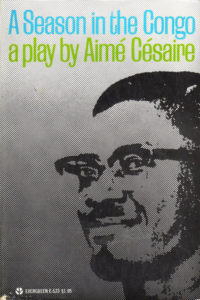
When Barney Rosset purchased Grove Press in 1951, it was a small independent publisher in New York City’s Greenwich Village. In the 1950s and 60s, Grove introduced American readers to European avant-garde literature and theater, Beat poetry, abstract art, and revolutionary authors, including Che Guevara and Malcolm X.
In addition to publishing books, Grove ran a book club, and it published a literary magazine, the Evergreen Review, which ran from 1957 to 1973. In the 1960s, Grove operated a film distribution business and briefly owned a theater. It had a number of paperback imprints, including Evergreen, Black Cat, Zebra, and Venus Library.
Grove championed civil rights, the politics of the Left, as well as African American, ethnic and Third World literature. Grove published Victorian erotica and books that introduced the layperson to the new psychology.
Rosset was a pioneer in fighting censorship. Rejecting conventional notions of morality, he deliberately set out to overturn U.S. obscenity laws. Grove published three controversial and banned novels: the unexpurgated version of Lady Chatterley’s Lover by D.H. Lawrence, Tropic of Cancer by Henry Miller, and Naked Lunch by William Burroughs. These books contained explicit sexual language and therefore could not be published or sold in the United States, nor could they be shipped through the U.S. Postal Service. Grove fought, and won, many important anti-censorship battles at state and federal levels.
Seeking freelance work in 1951, Kuhlman showed his portfolio to Rosset, who was not impressed. However, as Kuhlman was putting away his samples, two abstract illustrations fell from one of the side pockets. The sketches were intended for an interview with Atlantic Records. At the time, Rosset was recently separated from his wife, the Abstract Expressionist painter Joan Mitchell, and his friends included Franz Kline and other abstract artists.
Rosset immediately recognized Kuhlman’s talent and hired him to design Grove’s book covers. Over the next 20 years, Kuhlman designed an average of 70 covers per year for Grove—approximately 90% of Grove’s covers. He received $50 per cover, until the mid-1960s, when he raised his rate to $100 per cover. His relationship with Grove remained fluid, and he was never a full-time employee—although at times he held the title of art director. He also designed logos, catalogs, and stationery for Grove, and in 1964, he redesigned the Evergreen Review as a full size magazine.
Kuhlman showed his portfolio to Rosset, who was not impressed. However, as Kuhlman was putting away his samples, two abstract illustrations fell from one of the side pockets. The sketches were intended for an interview with Atlantic Records. . . . Rosset immediately recognized Kuhlman’s talent and hired him to design Grove’s book covers.
Although they were never close friends, Rosset (who also considered himself an anarchist) proved to be the perfect sponsor for Kuhlman’s uncompromising sensibility. He was given free rein to create, with one requirement: The book’s title and the author’s name must appear horizontally and unobscured somewhere on the cover, for maximum legibility. Rosset rarely rejected Kuhlman’s cover ideas.
To satisfy Rosset, Kuhlman often displayed the book’s title and author on a banner of white across the top of the cover—a convention commonly used on album covers of the era. Below that, he was free to create as he wished. Another strategy was to position the title or author’s name within the artwork as a design element. He developed similar strategies to incorporate the publisher’s colophon into the overall design.
Advertising Work
Grove was not Kuhlman’s first job in the design world. Throughout his career, he always had other clients. His career in design began when he was hired by an old friend from California, Arnie Copeland, who had just been hired as the art director for Lockwood Studios. He quickly learned the basics of pasteup and design, and soon began teaching a basic design course at The School of Advertising and Editorial Art, where he taught for five years.
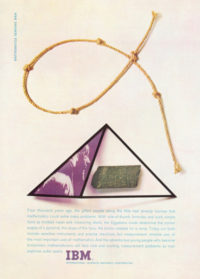
In 1950, Kuhlman worked as assistant art director for O’Brien and Dorrence Advertising Agency, where he worked for about a year. Kuhlman was then hired by the famed art director Herb Lubalin at Sudler & Hennessy, a pharmaceutical agency, where he worked with designer Henry Wolf, advertising man George Lois, and photographer Carl Fischer. He eventually became the art director there.
In 1954, Kuhlman replaced Neil Fujita as art director for Columbia Records for one year. Fujita had left to start his own design studio. However, a year later Fujita’s new company had failed, and he asked for his job back. During his tenure, Kuhlman hired a young designer named Ivan Chermayeff, but they didn’t get to work together at Columbia because Chermayeff’s first day at work was the day Fujita returned.6 Years later, however, Kuhlman and Chermayeff co-taught a design class at the School of Visual Arts in New York City.
In 1956, Kuhlman worked as art director and established the in-house art department for the public relations firm, Ruder and Finn. Their clients included CIBA Pharmaceuticals, Hotel Corporation of America, Johnson & Johnson, Tupperware Home Parties, Monsanto Chemical, Dow Chemical, Philip Morris, The Parker Pen Company, LIFE magazine, and Westinghouse Electric.
Then he worked as a freelancer with William Buckley, Art Director at Benton & Bowles, where he designed the award-winning Mathematics Serving Man campaign for IBM. The ads won the AIGA Best Ads of the Year Award in 1958 and appeared in Time, Newsweek, and U.S. News & World Report in May 1960.
In the late 60s, Kuhlman was hired to be the creative director for U.S. Plywood, where he worked for 5 years, and he obtained a 2.5-year contract with IBM. The IBM job was the highpoint of his career, and he was finally earning a six-figure salary befitting his stature. He produced 700 slides and 52 live-action and animated shorts to promote computer sales. IBM did not renew his contract, allegedly due to changes in the industry. Unfortunately, he signed a confidentiality agreement and was not allowed to show this work in his portfolio.
Kuhlman Associates
In 1964, he formed Kuhlman Associates to serve industrial clients in the areas of advertising, promotion, audio-visual and studio photography. Kuhlman later said that he created the new business name because he thought it made him sound more professional, as it implied that he had employees.
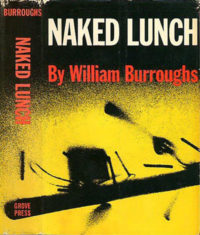
As of this writing, no employees or partners of Kuhlman Associates have come forward. Nevertheless, some Grove Press covers credited to Kuhlman Associates appear to have design elements that lend validity to the claim that he had employees or partners.
Collaborative Covers
Throughout Kuhlman’s tenure with Grove, the occasional apparent collaborative work tells a story about the book’s content or importance. Books containing controversial material often had rather bland or minimalist covers, as a result of Rosset’s involvement in the design. This was strategic: Rosset was concerned that publishing such controversial material encased in equally incendiary covers could result in more lawsuits or other problems.
Fred Jordan explained that the cover of Naked Lunch by William Burroughs was originally designed by Grove staffers because of the importance of the work, but Kuhlman was brought in to improve the design.7 The end result was a collaborative cover, with Kuhlman’s abstracted photo of objects that you might find on a lunch counter, including a fork and what appears to be a matchbook with used matches. The typography shows the collaboration: the leading on the two lines of type is much larger than on covers created by Kuhlman working alone. And the author’s name appears on the spine horizontally, which is also not Kuhlman’s style.
The Break with Grove
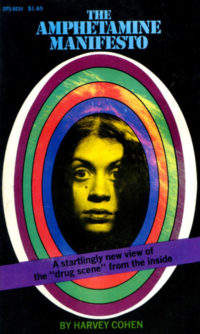
Kuhlman worked for Grove until early 1972, when he was fired for using his office at Grove Press to design book covers for the company’s competitor, Olympia Press (New York), owned by Maurice Girodias. Rosset and Girodias knew each other from the early days of Grove. Throughout the 50s and 60s, Grove printed American editions of many books originally published by Olympia Press in France, including works by Samuel Beckett, Henry Miller, William Burroughs and Pauline Reage.
The early 1970s was a difficult time for Grove. The company had grown from a small company with a shoestring budget and a tiny staff to a multi-million dollar publishing house. In 1967, Grove went public. However, within the next few years, Rosset’s excessive spending put a financial strain on the company.
In 1968, the company was bombed, allegedly by anti-Castro Cubans in response to a pro-Castro article in the Evergreen Review. In 1969, during a recession that caused real estate prices in New York City to plummet, Rosset bought a seven-story building in Greenwich Village and spent more than $2 million on renovations.
While his investments in numerous ill-fated foreign and erotic film projects were bleeding the coffers, Rosset was dealing with tax problems and still paying the legal costs associated with the censorship battles.
In 1970, Grove’s staff of 150 began organizing a union. Rosset fired some of the organizers, which inspired the formation of a picket line. A group of nine women occupied the executive offices at Grove, lead by Grove editor Robin Morgan who had been fired for being a union sympathizer. The women demanded union recognition and complained that Grove was guilty of discrimination against the female employees. The police were called, and the women were handcuffed and removed from the premises.
Enter Venus Library
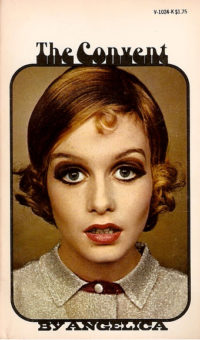
To satisfy Grove’s urgent need for cash flow, in 1968, Rosset decided to establish an additional mass-market imprint with the name Venus Library, devoted entirely to erotica. John Hayes, the owner of Grove’s paperback distributor Kable News, had been urging Rosset to invest in the growing pulp-porn industry as a money-making scheme. The early 70s were difficult for many companies as a result of the recession, but porn was booming.
In their contract with Kable News, Grove had promised to supply 10 paperback books a month, which they were struggling to fulfill with the Zebra and Black Cat lines. In 1970, Kuhlman was given office space at the new Grove headquarters, where he was busy producing book covers to meet the demand.
In line with Rosset’s personal interests, the imprint consisted largely of reprints of early twentieth-century softcore editions, many of which had previously been published by Olympia Press. However, by the early 1970s, the market for vintage erotica was declining, in part due to the increased availability of raunchier material such as Screw Magazine. In an ironic twist of fate, Rosset’s own efforts in the battle to overturn censorship laws helped to create this new hardcore porn marketplace.
Despite efforts to adapt to the demands of the market, sales continued to decline. To make matters worse, in a somewhat shady arrangement, Kable News had been advancing money to the publisher to cover the printing costs in excess of actual production costs, and Grove ended up owing Kable a fortune.

As a result, in early 1972, around the same time that Kuhlman was fired, Venus Library became the property of Kable News as settlement for Grove’s debt. Kable News was also the distributor for Olympia Press, which was in a similar situation with the distributor. Within a year, the imprint, now called Venus Books, was transferred to Maurice Girodias, apparently in an attempt to shore up his ability to repay his company’s debt.8
It appears that Kuhlman designed many covers for Olympia during that period, but there are no records available to verify that. And it is very likely that Hayes helped him obtain that additional work at Olympia.
At the time he was fired, Kuhlman was working without a contract—he always preferred to operate with just a handshake. Kuhlman sued Grove for money they owed him, close to $8700. In court transcripts, Grove, represented by Fred Jordan, claimed that Kuhlman was responsible for the declining sales because the covers he created for Olympia were so similar to the covers he designed for Venus Library. The case was eventually settled out of court.
Grove continued to struggle throughout the 1970s. In 1985, Rosset sold the company to Anne Getty with British publisher George Weidenfeld, and in 1993, Atlantic Monthly Press purchased Grove.
1970s and Beyond
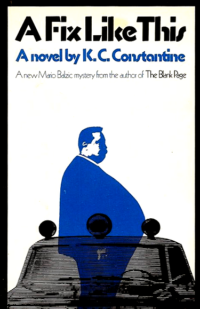
The period from the late 1960s through the mid 1970s was a perfect storm of events for Kuhlman. After losing the Grove gig, he floundered.
Kuhlman was never good at managing his financial affairs. The money from the lucrative IBM contract was spent on hashish, marijuana, and elaborate parties at his Catskills home, attended by prestigious members of the advertising and design world. He spent money on numerous projects that he never completed. He collected books and objet d’art, filling the barn in the Catskills to capacity.
Saddled with child support and alimony payments, and caught up in the lawsuit with Grove, he filed for bankruptcy.
Perhaps due to the isolation and frustrations of his early childhood, Kuhlman’s temperament made it difficult for him to hold management positions. He was never a yes-man and had always attempted to shield himself from the client to avoid being influenced by their “uneducated” opinions.
By the 1970s, his reputation for being stubbornly idealistic and uncompromising, coupled with his inability to navigate office politics, caused his career to flatline. While so many of his peers and students established themselves as leaders in the industry, Kuhlman was unable to capitalize on his successes in advertising and the management opportunities he had been given.
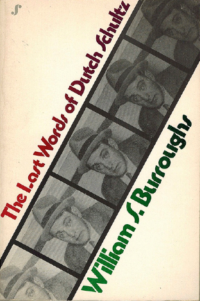
Always aware of politics and history, after the U.S. went off the Gold Standard in 1971, he became more conservative and joined the Libertarian Party. He was becoming privately disillusioned about the state of the world as well as his future in graphic design.
The emerging visual styles in contemporary art and design did not provide the inspiration he needed. And his style adaptations, which had enabled him to stay current for more than 20 years, appeared to be heading for a dead end. Without inspiration, adapting to the new styles felt like selling out.
The industry itself was changing, and the mid-century concept of graphic designer as “artist” was being replaced by a more corporate concept where designers were simply performing a service that was more about marketing than art.
The incursion of computers into the fundamental process of design posed a real barrier for Kuhlman. Before desktop publishing software arrived in the mid-80s, designs were executed manually using traditional drafting tools, X-ACTO blades, pen and ink, etc.
The various elements—including photographs, printed type, acetate, Photostats—were attached to the pasteup board with rubber cement and masking tape to create the composition. The finished “mechanical” was essentially a collage of type, images and color gel sheets with instructions for the printer.
The industry itself was changing, and the mid-century concept of graphic designer as “artist” was being replaced by a more corporate concept where designers were simply performing a service that was more about marketing than art.
For Kuhlman, design was integral with the physical act of producing the mechanical. A master of composition, his process consisted of moving the images and other elements around on the board, experimenting until if felt right. He despaired about the future of an industry in which computers enabled people with little or no art training to claim the title of designer.
During the 1970s and 1980s, his connections at Grove and other companies provided a sporadic flow of jobs. Former Grove editor-in-chief Richard Seaver hired Kuhlman to design covers for his Seaver Books imprint of Viking Press. Kuhlman’s ex-wife Gilda gave him freelance jobs for Praeger, where she worked as art director. And he designed covers for Steinerbooks (an imprint of Rudolf Steiner Publications), owned by his friend Bernie Garber.
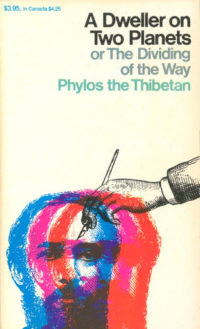
During this period, Kuhlman also designed book covers for Ungar Recognitions, Dutton, Quadrangle, Braziller, and the adult book publishers Manor Books and Carlyle Communications (a subsidiary of Beeline).
In the late 70s, Kuhlman’s friend Ward Damio helped him to get work as a designer for the magazine High Times, where Damio had steady work. Their relationship expanded and they collaborated on several design projects including the first issue of Dealer magazine, published by High Times.
He attempted to enter into other fields, but without any real success. Damio had years of experience as a writer’s agent, and Kuhlman attempted to learn the business, but without much success. Like so many of Kuhlman’s work relationships, their partnership came to an abrupt end. But their work together inspired Kuhlman to write his own mystery novel, which remains unpublished.
Kuhlman barely survived on freelance jobs and part-time work for the rest of his life. He later reflected that his run with Grove was the highlight of his career: “Barney was the greatest client I ever had. He gave me the freedom to explore, to fail, and to win.”9
Retirement
In the early 80s, Kuhlman sold his property in the Catskills and purchased an old dilapidated farmhouse with a much larger barn in Gardiner, New York, which was closer to New York City. His mother had recently come to live with him, and she had been staying in his Catskills home. But after she wandered into the woods one winter night, as a result of her dementia, Kuhlman realized that he needed to make some changes. In addition, his teenage children were able to live with him for the first time.
By the mid-1980s, Kuhlman’s mother had passed away, and he began to think about his future retirement. In the late 80s, Kuhlman made his last attempt to enter into a new career. It was a strategy designed to boost his income before he applied for Social Security, in an attempt to increase his monthly benefits. He was hired at Cell Art, a New York animation firm that was struggling to adapt to the introduction of computers into the field of animation. The company quickly went out of business.
Kuhlman later reflected that his run with Grove was the best time of his life: “Barney was the greatest client I ever had. He gave me the freedom to explore, to fail, and to win.”
However, his work with Cell Art inspired and coincided with a period of intense creative productivity in which Kuhlman produced hundreds of abstract photographs using carefully positioned antique beveled glass to refract colored lights.
After his induction into the Hall of Fame in 1995, Kuhlman officially retired. He kept busy going to flea markets and collecting old books, antiques, ephemera, vintage photos, art and other items that inspired him. He spent his days organizing and adding to his collection, and spending time with friends and family.
Perhaps due to inactivity, his mental acumen began to decline. Several months after the tragedy of September 11, Kuhlman became lost while driving, and could not find his way home. Tragically, his driver’s license, and thus his freedom, was taken away. He moved to Arizona to live with his daughter, and later, he moved into a state-funded nursing facility. Kuhlman passed away in 2007, from pneumonia.
His creative genius lives on in his legacy, consisting of thousands of published designs. His commitment to the purity of his artistic self-expression is reflected in the volume and quality of his work, as well as the consistency of his recognizable style.
Notes
- “Grove Press at the Vanguard” by Steven Brower and John Gall. Print Magazine (March/April 1994).
- Conversation between Fred Jordan and Arden Riordan, 2014.
- “Roy Kuhlman Dies at 83; Designer for Grove Press” by Steven Heller. The New York Times (February 5, 2007).
- “The Invention Of Mid-Century Cool On The Revolutionary Book Covers Of Roy Kuhlman” by Loren Glass. Literary Hub (October 16, 2015).
- “Roy Kuhlman Dies at 83; Designer for Grove Press” by Steven Heller. The New York Times (February 5, 2007).
- “Rashomon in the Record Business” by Paula Scher. Originally published in the AIGA Journal of Graphic Design, Vol. 7, No. 4, 1990.
- Conversation between Fred Jordan and Arden Riordan, 2014.
- “One Touch of Venus (Library): Odyssey of an Imprint, Part I” FineBooks and Collecting Magazine (March 5, 2009).
- The Art Directors Club Hall of Fame.
Other References
- “Obituary: Barney Rosset / Book publisher who fought obscenity laws” by Becky Krystal. The Washington Post (February 23, 2012).
- Counterculture Colophon: Grove Press, the Evergreen Review, and the Incorporation of the Avant-Garde by Loren Glass (Stanford University Press, 2013).
- “Remembering Roy Kuhlman” by Steven Heller. Print Magazine (July 6, 2012).